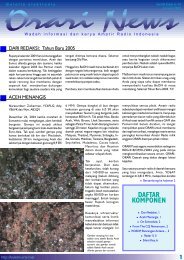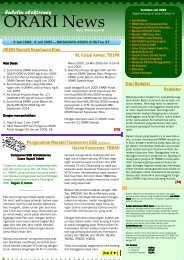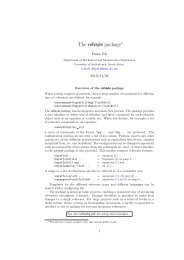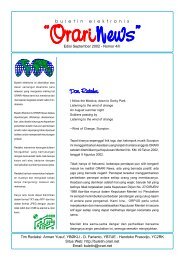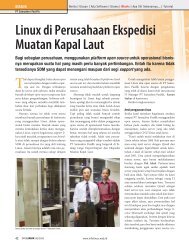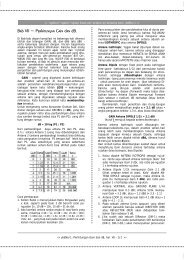Create successful ePaper yourself
Turn your PDF publications into a flip-book with our unique Google optimized e-Paper software.
It should be noted that the lead connecting to the screen grid for<br />
tetrodes and pentodes is common to both the output and input<br />
resonant circuits. Due to the anode-to-screen capacitance of a<br />
tetrode or pentode, the rf anode voltage (developed in the output<br />
circuit) causes an rf current to flow through the screen bypass<br />
capacitor to the chassis. In the case of a push-pull stage this<br />
current may flow from the screen terminal of one tube to the screen<br />
terminal of the other tube. Similarly, due to the grid-to-screen<br />
capacitance of the tube, an rf voltage in the input circuit will cause<br />
an rf current to flow in this same screen lead to the chassis, or to<br />
the opposite tube in the push-pull circuit.<br />
The inductance of the lead common to both the output and input<br />
circuits has the desirable feature of providing voltage of opposite<br />
polarities to neutralize the feedback voltage of the residual anodeto-control<br />
grid capacitance in the tube (this is discussed under<br />
“Neutralization” in section 5). It should be noted, however, that the<br />
mutual coupling from the screen lead to the input resonant circuit<br />
may be a possible source of trouble if the inductance is excessive.<br />
With common-grid (cathode-driven) triode circuits, the control grid<br />
and associated leads are common to the output and input circuits.<br />
The inductance of the control grid lead can help or hinder the<br />
stabilization of a grounded grid amplifier (this is discussed under<br />
“Neutralization” in section 5).<br />
In common-cathode (grid-driven) circuits, excessive cathode lead<br />
inductance can be detrimental to good performance. RF current<br />
through any inductance in the cathode lead (or in the case of<br />
thoriated tungsten tubes the filament) to ground will cause an rf<br />
voltage to appear across the grid-to-cathode region and, due to<br />
phase relationships, will decrease the input conductance. This will<br />
result in increased drive power requirements as the frequency is<br />
raised. The net anode (output) efficiency can also be affected by<br />
this effect. A mathematical formula for power loss vs. frequency<br />
due to cathode lead inductance is presented in sec. 6.8. In large<br />
power grid tubes, this loss of efficiency and low gain may begin<br />
to occur at frequencies above 20 to 30 MHz, depending on the<br />
physical size of the filament. Some Eimac triodes using filament<br />
leads (also called flying leads) are provided with threaded holes<br />
for connecting the input circuit directly to the tube’s filament ring;<br />
this is also the correct point for a filament bypass capacitor, not at<br />
the tube lug ends. At VHF and UHF frequencies it often becomes<br />
necessary to utilize an input tuned circuit that is a direct extension<br />
of the tube, ie, there is no discrete socket. This so-called “cavity”<br />
structure eliminates series inductance, which is so detrimental at<br />
these frequencies.<br />
55




